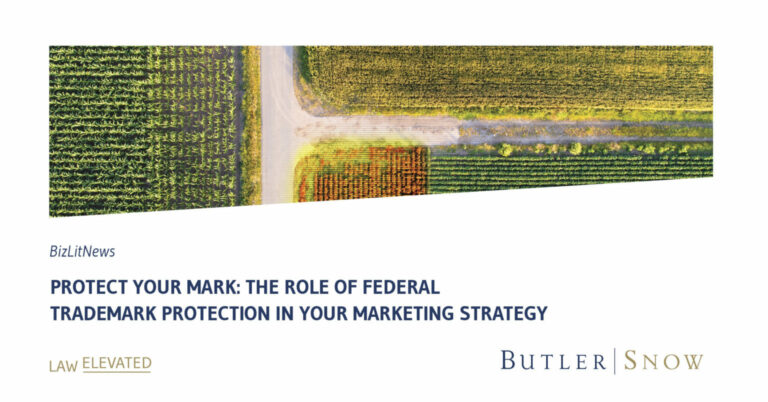The value of a brand is becoming increasingly important in today’s economy. With the massive growth of the internet, businesses can project their image worldwide with ease. Further, competitors are no longer just local. Given this reality, having a distinctive brand and protecting one’s intellectual property has become a need for businesses of all sizes. The solution for many businesses is federal trademark protection.
A trademark is a brand name that should distinguish your goods and services from those of your competitors and identify the source of the goods and services themselves. See USPTO Trademark Basics (2020), http://www.uspto.gov/trademarks/basics/. Though it is a common misconception that substantive trademark rights are conferred by registration, trademark rights are actually created through actual usage and distinctiveness. Though registering a trademark does not confer any substantive rights; it does afford several procedural advantages in protecting a brand, namely:
- Public notice of the claim of ownership of the mark;
- A legal presumption of ownership and exclusive right to use the mark nationwide on or in connection with the goods/services listed in the registration; and
- The ability to bring an action concerning the mark in federal court under federal question jurisdiction.
A trademark may be registered with the U.S. Patent and Trademark Office if it is “capable of distinguishing the applicant’s goods from those of others.” A mark’s distinctiveness is often classified in categories of generally increasing distinctiveness: (1) generic; (2) descriptive; (3) suggestive; (4) arbitrary; or (5) fanciful. Generic marks are not entitled to trademark protection, and suggestive, arbitrary, and fanciful marks are inherently distinctive. A mark that is descriptive may acquire distinctiveness if it “has become distinctive of the applicant’s goods in commerce,” which is generally called “secondary meaning.” See the Lanham Act, 15 U.S.C. § 1052.
When forming a new business, giving thought to branding is essential. Be sure to take time when creating a brand name to ensure that it is not simply descriptive (e.g., Red Apple for apples), but is distinctive (e.g., Juicy for Apples). One does not want to spend the money and time necessary to create a powerful brand only to find out that the brand cannot be protected.
If you have concerns about creating, growing, or protecting your brand, please contact us for more information.
